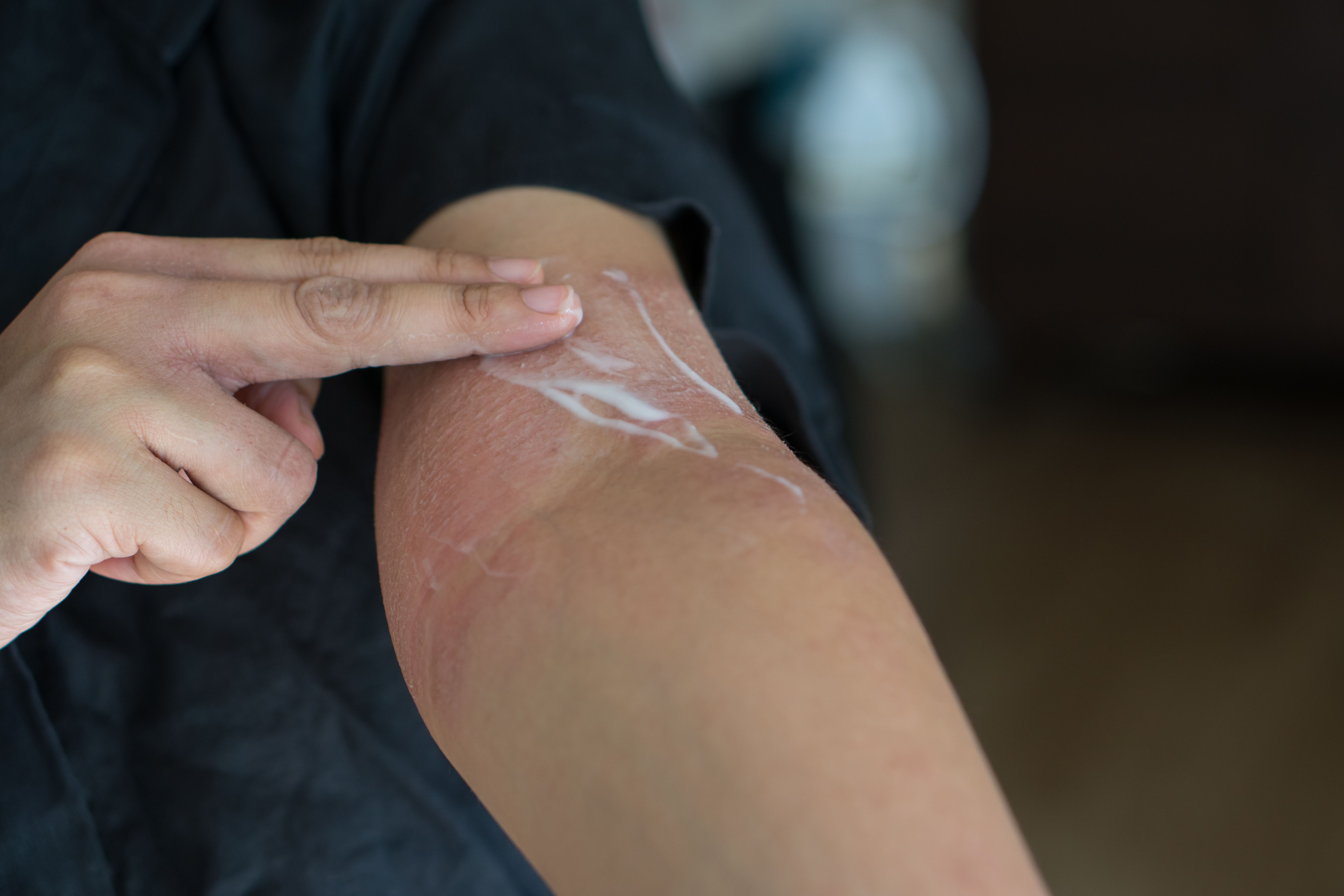News
Article
Ruxolitinib Reduces Extent, Severity of AD and Need for Other Treatments
Author(s):
A physician-reported outcomes survey found that physicians switched to ruxolitinib cream due to lack of effectiveness with previous atopic dermatitis (AD) treatments, and an analysis of claims data revealed the cream reduced the need for other treatments.
This content was produced independently by The American Journal of Managed Care® and is not endorsed by the American Academy of Dermatology.
Ruxolitinib cream monotherapy was able to provide satisfactory disease control in patients with atopic dermatitis (AD) according to a poster presented at the American Academy of Dermatology (AAD) Annual Meeting 2024. Physicians were found to switch to ruxolitinib when other treatments were less effective at controlling the disease.
AD is a chronic, inflammatory skin disease that can be very pruritic and can relapse at any time. Ruxolitinib cream, a Janus kinase (JAK) 1/JAK2 inhibitor that can be used as a nonsteroidal monotherapy twice daily, was approved by the FDA in 2021 to treat AD in both adolescents and adults. Ruxolitinib would be used in these populations if other topical therapies were not able to control the disease. This study aimed to assess the satisfaction of physicians who use ruxolitinib to control AD in patients who have mild or moderate forms of the disease.1
Cream applied to rash on skin | Image credit: sattahipbeach - stock.adobe.com

All data were collected from the Adelphi AD Disease Specific Programme, which is a survey from the United States that included both physicians and their patients in a cross-sectional design. All retrospective data were included in the survey, which took place from August 2022 to March 2023. Patients were included if they were aged 18 years and older and who had mild to moderate AD that was treated using ruxolitinib monotherapy for at least 1 month.
Patient demographics and clinical characteristics were collected using answers from the physicians. Treatment history, satisfaction with the control of AD, and disease control measured by Investigator’s Global Assessment (IGA) and affected body surface area (BSA) were also included.
There were 149 patients who were treated with ruxolitinib included in this study; of those, 59 received it as a monotherapy. The median (range) length of time on ruxolitinib treatment was 6.1 (1.3-12.3) months. There were 36 patients who had data on the reason for therapy change. A total of 33.3% cited a lack of efficacy and 30.6% reported a lack of long-term control when using their previous treatment; the third most common reason for the switch was that the patient requested the switch, accounting for 27.8% of the 36 patients.
The researchers found that the mean affected BSA decreased from 13.5 to 5.7 when patients switched to ruxolitinib cream. Disease control also improved in most patients, with 62.7% presenting a reduced IGA. The amount of patients who had severe AD decreased from 5.0% to 0% whereas the amount of patients with moderate AD decreased from 84.8% to 37.3%. A total of 91.5% of physicians were satisfied with their patient’s AD control after using ruxolitinib, compared with 6.8% who were not satisfied.
The researchers concluded that the survey “demonstrate[d] that physicians switch to ruxolitinib cream therapy mostly due to lack of efficacy and lack of long-term disease control with previous AD therapies.” Ruxolitinib can help to both provide disease control of AD and reduce the severity of AD in patients using the treatment.
A second study2 was conducted to evaluate the effectiveness of ruxolitinib cream and whether it could reduce the usage of other therapies. This study also aimed to describe the treatment patterns of patients who switched from another therapy to ruxolitinib as well as describe the characteristics of patients who had switched.
Claims data from the Healthcare Integrated Research Database was used to collect data for the retrospective study. Patients were included if they had a first claim for ruxolitinib between October 2021 and July 2022. Patients needed to be aged 12 years and older at the index date, have at least 1 pharmacy claim of ruxolitinib cream, have a medical claim with an AD diagnosis within 6 months, and have 6 or more months of continued enrollment in a health care plan that spanned before and after their index date.
There were 1581 patients included in this study who had 1 or more claims for ruxolitinib and had AD. A total of 57.4% of patients had received topical therapy for AD and 36.2% received systemic therapy in the 6 months before their index date. A total of 56.2% of the participants were white, 65.0% were female, and the mean age was 38.8 (17.03) years; 52.3% of patients had taken topical corticosteroids as their baseline therapy for AD.
The mean number of ruxolitinib cream fills was 1.6 (1.07) in the 6 months after the index date. Ruxolitinib cream monotherapy was given to 43.8% of patients and a new class of treatment for AD was not given to 72.0% of patients after they started using ruxolitinib cream. The use of other topical therapies was reduced in patients who started ruxolitinib cream treatment. Oral corticosteroids were used by 20.9% of patients prior to the index date, which was reduced to 15.5% in the follow-up period, with the cumulative prednisone-equivalent dose decreased in all patients by 31.5%.
Biologics were not received in the 6-month follow-up period by 92.3% of the 1283 of the patients who were biologics-naïve in the preindex period. Biologics were not continued in the follow-up period by 17.4% of patients who were receiving biologics during the preindex period.
The researchers concluded that a decrease in the utilization of other drugs was found in patients who used ruxolitinib cream to treat AD. This included a decrease in topical and oral corticosteroids, prevention of patients from starting biologics, and other treatments for AD not being needed. “Early assessments suggest that initiating ruxolitinib cream may reduce the overall need for other AD therapies such as topical/oral corticosteroids and biologics,” the researchers wrote.
Reference
- Eichenfield LF, Liu J, Howell O, Piercy J, Sturm D, Anderson P. Real-world clinical experience with ruxolitinib cream monotherapy to manage atopic dermatitis. Presented at American Academy of Dermatology Annual Meeting; March 8-12, 2024; San Diego, CA. Abstract 53107.
- Liu J, Desai K, Teng CC, Sturm D, Stockbower G, Wiley V. Atopic dermatitis treatments before and after initiation of ruxolitinib cream: analysis of a US payer claims database. Presented at American Academy of Dermatology Annual Meeting; March 8-12, 2024; San Diego, CA. Abstract 53102.

The Importance of Examining and Preventing Atrial Fibrillation




